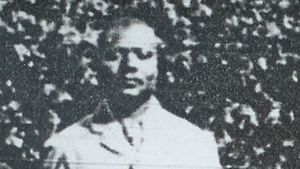Dr Tlou Setumu
Piet Potgieter, who succeeded his father, Andries Hendrik Potgieter as a Commandant-General of Zoutpansberg, immediately gathered a commando in order to punish those who killed Hermanus and his party. Kgoši Mokopane’s people withdrew into a huge cave which was then besieged by the Boers from October to November 1854. Many lives were lost during the siege and Piet Potgieter was shot by the Matebele and fell from the roof of the cave while he was trying to position himself to be able to shoot into the cave. He died instantly and Paul Kruger, one of the commando leaders, later managed to recover his body. Later the small town of Potgietersrus was established and was named after him as it was where he was laid to rest. It was formerly called Piet Potgieter’s Rust – P.P. Rust.
While the Matebele were still trapped and besieged in the cave, Kgoši Mokopane, again with his power of “seeing”, instructed that the children be taken out of the cave. Among those children who went out of the cave was Mokopane II. The Boers captured those children together with Mokopane II and they were indentured. Apparently the Boers could not sustain the siege as most of the Kekana went out either through other openings or after the Boers gave up the siege. According some other sources, Kgoši Mokopane was tied on a cow as he escaped from the surrounded cave. According to the same sources, he later committed suicide, most probably in November 1854, as the Boers were hunting for him. After the clashes with the Boers subsided, the Kekana went out to settle at Ga-Mmachidi (Ganochidi) around the Zebediela area. This is where the ailing Kgoši Mokopane asked Magemi to ensure that they should go all out and look for Mokopane II who must come to be the new chief. Kgoši Mokopane told them that he saw Mokopane II in dreams that he is still alive. After Kgoši Mokopane’s death, he was buried at Ga-Mmachidi and Magemi then became regent.
During the migratory journeys to the mines, Mokopane II was found by some of the Matebele migrant labourers looking after a certain Boer farmer’s livestock around the present day Brits. It must be borne in mind that was indentured to the Boers along with the other Kekana children who were taken out of the cave during the 1854 siege. The miners who saw Mokopane II returned home and informed the community. A delegation of able-bodied young men was sent out to check what was brought by the miners. The White farmer who was keeping Mokopane II became furious after learning that the delegation was from the Kekana, who had killed most of his people, including Hermanus Potgieter and his nephew, Piet Potgieter. His wife softened him. But Boer farmer demanded payment with elephant tusks and large numbers of sheep before he could release Mokopane II, claiming that he had made him grow.
The Kekana community did have sheep but lacked tusks. They were then advised to go to Chief Molekwa near Mogalakwena to find elephant tusks. On their way to Molekwa, they were joined by the Langa warriors who accompanied them. Molekwa not only provided elephant tusks, he also offered his warriors –who all accompanied the Kekana with tusks and sheep to free Mokopane II from the Boer farmer. The Kekana–Langa–Molekwa high powered delegation with tusks and sheep arrived and the Boer farmer handed Mokopane II to them. This time the farmer was co-operative and he even advised Mokopane II to continue his good behaviour and trustworthiness in leading the Kekana. When they returned, Mapeni took Mokopane II to the mountain school. Thereafter Mokopane II took reigns of power. He ruled during turbulent times in which the Black chiefdoms including the Langa constantly attacked the Kekana. Ironically it was Langa who offered their men to accompany the Kekana to free Mokopane II from the Boer farmer. During Mokopane II’s reign the Kekana warriors were led by a strong man called Nkakabidi.
The Langa people were concerned about Mokopane II’s growing power and they were determined to destroy that power. But as they realised that Mokopane II was to strong to be destroyed, they opted for appeasement. The Langa then offered Mokopane II woman as a sign of peace. And again, Mokopane II was allowed to choose his favourite wife from the Langa. Mokopane II’s main wife bore only a daughter, Ntjatji, while the wife from Langa whom he chose himself bore a son, Valtyn (Lekgobo). Mokopane II gave his son this Boer name he grew up in the Boer farm. He himself was given the name Hendrik by the Boer farmers and he was heavily infl uenced by their ways of life. He was also very fl uent in their language. It is said that because of his fl uent in the Boers’ language, he later became a spokesperson and interpreter for the Black chiefs in their dealings with the Boer authorities. Mošupša was another son born by the woman who was given to Mokopane II by the Langa. That woman was given to Mokopane II when she was already pregnant. When Mokopane II died in the 1890s, Valtyn was appointed to act because the principal wife had no son, she only had Ntjatji. The Matebele were not in favour of being led by a female ruler, hence Ntjatji couldn’t be given the reigns of power. The Kekana community then “married” a wife- mmasetšhaba - for Valtyn in order to produce an heir to the throne. Valtyn slept with that “community wife’ and a baby girl was born. With another wife Valtyn fathered Kgatabedi II (Bernard). Before his death, Valtyn instructed that the throne be given to Musupša. Makgoboketša gave the throne to Kgatabedi II in 1923, after acting for three years. Kgatabedi II married his wives and married mmasetšhaba who died while pregnant. Kgatabedi II died in 1933 and his uncle Gojela1 (Shikwane) was asked to act in 1934 on behalf of Alfred, the son of Kgatabedi II’s other wife, Sedibu. Gojela died in 1961 and Sedibu took over and mmasetšhaba, Naum Langa, was married. Naum Langa gave birth to the present (2005) ruler, Valtyn Kekana. There is also another version in which some sources say Madimetja (Alfred) succeeded Gojela in 1962 and he ruled until his death in 2000. Apparently, the conflicting versions are a reflection of the current dispute in the Kekana chieftaincy.
Source: Limpopo Provincial Government heritage Month Souvenir Edition 2009
Ngwathelanang
- ${title}
Loading...
Ngwathelanang
Kgoshi Mokopane II Part 2

Date: Sep 7, 2016
The history of Limpopo.
Web Content Viewer (JSR 286)
- ${title}
Loading...
ADVERTISEMENT
Ka Difokeng
- ${title}
Loading...
Web Content Viewer (JSR 286)
- ${title}
Loading...







